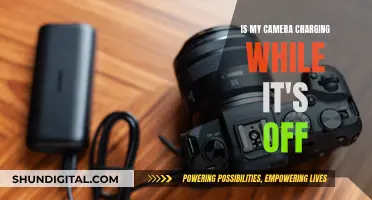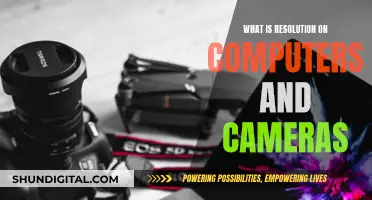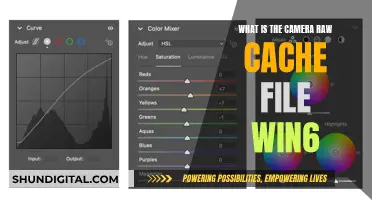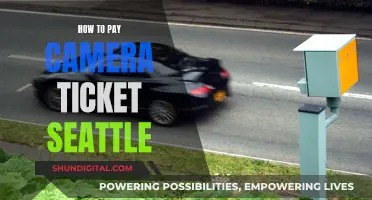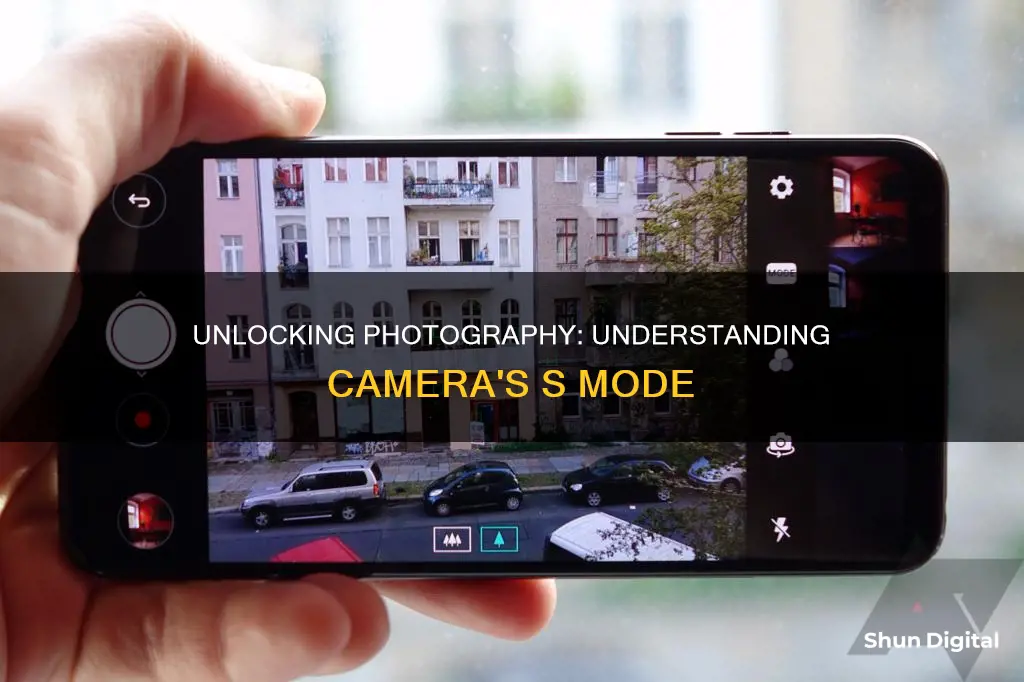
Understanding the different modes on your camera is essential to controlling the exposure in photography. The S mode, or Shutter Priority mode, allows you to manually set the shutter speed while the camera automatically adjusts the aperture based on the available light. This mode is useful when you need a specific shutter speed, such as for capturing light trails or fast-moving subjects. It gives you more creative control over your photographs by letting you decide how much motion blur you want. For example, a slower shutter speed will let in more light and create motion blur, while a faster shutter speed will freeze the action.
| Characteristics | Values |
|---|---|
| What does S stand for? | Shutter Speed |
| What is the S mode? | Shutter Priority |
| What does the S mode do? | It automates settings while giving the user control over shutter speed |
| When is the S mode useful? | When capturing light trails, shooting sports photography, or capturing moving subjects |
| What does the camera do in S mode? | It chooses the appropriate aperture for the given scene |
What You'll Learn

S mode stands for shutter speed
S mode, or Shutter Priority mode, is one of the four main camera modes found in most serious cameras. It stands for "shutter speed", and it allows the user to control the shutter speed while the camera automatically adjusts the aperture to ensure correct exposure. This mode is a good choice when you want to use a specific shutter speed to capture a scene, such as when capturing light trails or shooting sports, as it helps you achieve the desired shutter speed without worrying about ruining the exposure.
Shutter speed refers to the length of time that the shutter in front of the image sensor is open. A faster shutter speed will freeze the moment better and avoid blur, but it will also make photos darker. Conversely, a slower shutter speed will allow your camera to capture more light, which is useful in low-light situations. However, a slower shutter speed can also result in blurry images if the camera or the subject is moving.
In Shutter Priority mode, you can set the shutter speed as you like, and the camera will automatically adjust the aperture (f-number) to ensure a well-exposed photograph. This mode is particularly useful when you want to capture a moving subject and freeze its motion. For example, if you are photographing sports or high-speed phenomena, using a short exposure can effectively freeze the motion in the resulting image. On the other hand, if you want to capture the flow of water or light trails, a slower shutter speed can help you achieve this effect.
Shutter Priority mode is a useful tool for photographers who want to have direct control over their camera's shutter speed while still benefiting from the camera's automatic adjustment of the aperture. It strikes a balance between full manual control and the convenience of automatic modes, allowing for creative expression while also ensuring correctly exposed photographs.
Lithium-ion Camera Batteries: Safe Air Travel Tips
You may want to see also

S mode is one of the four main camera modes
In Shutter Priority mode, you manually set the camera's shutter speed, and the camera automatically selects the right aperture for you, based on the amount of light that passes through the lens. This mode is best used when you want to capture motion, either by freezing it with a fast shutter speed or by intentionally blurring it with a slow shutter speed.
For example, if you want to capture light trails, you would use a slow shutter speed. On the other hand, sports photographers might want to use a fast shutter speed to capture moving subjects.
Shutter Priority mode is a semi-automatic mode, giving you control over shutter speed while automating the aperture setting. It is a good mode to use when you want to ensure you are using a specific shutter speed to capture a scene appropriately.
While S mode is one of the main camera modes, it is not as commonly used as Aperture Priority mode, which gives you control over the aperture setting and is the mode that most professional photographers use about 95% of the time.
The four main camera modes (Program, Shutter Priority, Aperture Priority, and Manual) give you varying levels of control over your camera's settings, with Program mode being the most automatic, and Manual mode giving you full control over all settings.
Locking Camera to Portrait Mode in Swift 4
You may want to see also

S mode automates settings other than shutter speed
S mode, or shutter speed priority mode, is a semi-automatic mode that allows you to manually set your camera's shutter speed while the camera automatically adjusts the aperture (f-number) and ISO sensitivity to produce a well-exposed photograph. This means that, unlike in manual mode, S mode automates settings other than shutter speed.
In S mode, you have control over your camera's shutter speed, which determines the length of time that the shutter in front of the image sensor is open and exposing the image sensor to light. The longer the shutter is open, the more light reaches the image sensor, which can help to capture the motion of a moving subject or create light trails. However, a slower shutter speed can also result in a blurry image if your camera or your subject is moving, so it is important to use a tripod or increase the ISO sensitivity in low-light situations.
While S mode automates settings such as aperture and ISO, it is important to understand how these settings interact with shutter speed to produce a well-exposed photograph. A wider aperture lets in more light but makes the background blurry, while a narrower aperture keeps everything in focus. ISO represents the level of sensitivity in a camera sensor, so a higher ISO will capture more light but also add more noise or grain to the image.
S mode is a good choice when you want to use a specific shutter speed to capture a scene, such as when capturing light trails or photographing sports. It allows you to focus on the scene and ensure you don't miss critical shots by automating settings other than shutter speed. However, it's important to note that the camera might make frustrating choices when picking the aperture and ISO, and you might need to make adjustments in very bright or low-light conditions.
Defringing in Camera Raw: A Step-by-Step Guide
You may want to see also

S mode is useful for capturing light trails and sports events
S mode, or Shutter Priority mode, is a setting on your camera that allows you to manually set the shutter speed while the camera automatically adjusts the aperture to ensure a proper exposure. This mode is particularly useful when you need to use a specific shutter speed to capture a scene effectively.
When it comes to light trail photography, S mode can be invaluable. Light trail photography involves using a slow shutter speed to capture the path of moving lights, creating bright lines that draw the viewer's eye through the composition. By using S mode, you can ensure that you're using a slow shutter speed to capture those light trails, without having to worry about the technical details of aperture and exposure. This is especially helpful when shooting in low-light conditions, as the camera will adjust the aperture accordingly to compensate for the slow shutter speed.
S mode is also ideal for sports photography, where the action is fast-paced and you need a fast shutter speed to freeze the moment. With S mode, you can set a fast shutter speed to capture sharp, blur-free images of athletes in motion, and the camera will automatically adjust the aperture to maintain proper exposure. This is crucial in sports photography, where you need to capture decisive moments that can occur in the blink of an eye.
Additionally, S mode can be beneficial when photographing sports or action scenes with varying lighting conditions. For instance, during an outdoor sports event, the lighting may change from bright sunlight to shade as the players move around the field. By using S mode, you can quickly adjust your shutter speed to suit the lighting conditions, and the camera will take care of the rest. This allows you to focus on capturing the action rather than fiddling with camera settings.
In both light trail and sports photography, it's important to remember that S mode is just one tool at your disposal. Depending on the specific scene and lighting conditions, you may need to adjust other settings, such as ISO, to get the best results. However, S mode is an excellent starting point for capturing dynamic scenes and ensuring you have the right shutter speed for the effect you want to achieve.
Image Modes: Choosing the Right Camera Setting
You may want to see also

S mode is also known as shutter priority
S mode, also known as Shutter Priority, is a setting on cameras that allows the user to choose a specific shutter speed while the camera adjusts the aperture to ensure the correct exposure. This is a useful mode when you want to ensure a specific shutter speed to capture a scene appropriately. For example, capturing light trails requires a slow shutter speed, and S mode will help you achieve that without worrying about ruining the exposure.
In S mode, you manually set the shutter speed, and the camera automatically chooses the right aperture and ISO setting to match. This is particularly effective for capturing moving objects sharply or with deliberate blur. It is mainly used in sports and nature photography, where several consecutive shots are taken, and manual adjustment of the aperture to the exposure time would be too time-consuming.
S mode is marked as "S" or "Tv" (for "time value") on the mode dial, depending on the camera brand. On Nikon, Minolta, Konica Minolta, Sony, Olympus, Sigma, and Panasonic cameras, it is abbreviated as "S", while on Canon, Pentax, and Leica cameras, it is abbreviated as "Tv".
S mode is a great option when you want to have control over the shutter speed to capture fast-moving subjects or create motion blur effects. It strikes a balance between full manual control and the automation of other settings, allowing you to focus on capturing the desired moment.
Live Mode: Capturing the Unfiltered Reality
You may want to see also
Frequently asked questions
The 'S' mode on your camera stands for "Shutter Priority" mode.
Shutter Priority mode allows you to control the shutter speed while the camera chooses the appropriate aperture for the scene.
Shutter Priority mode is useful when you want to use a specific shutter speed to capture a scene, such as when capturing light trails or photographing fast-moving subjects like athletes or race cars.
A faster shutter speed will freeze motion and help avoid blur, while a slower shutter speed will allow more light to enter the camera and can create motion blur.
To select Shutter Priority mode, look for the "S" or "Tv" setting on your camera's mode dial.


